The Essential Guide to Pool Remodeling
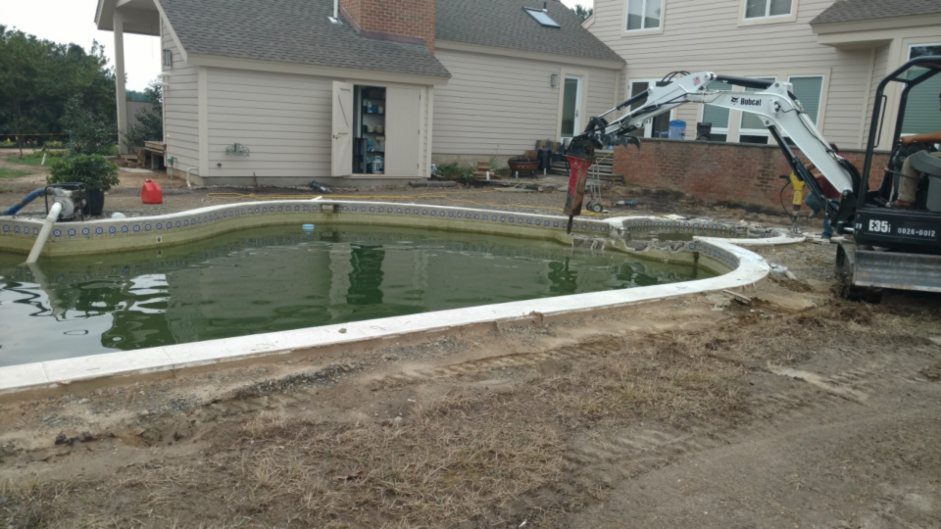
Providing Premier Pool Remodeling in Maryland & Delaware Transform your backyard into an oasis with Coastal Pools, the premier choice for pool remodeling services in Maryland and Delaware. With years of expertise and a commitment to excellence, we specialize in turning your existing pool into the luxurious retreat you’ve always dreamed of. Whether you’re looking to update your pool’s appearance, improve functionality, or incorporate energy-efficient features, our team of professionals are dedicated to providing personalized solutions that meet your specific needs and preferences. Join a growing family of satisfied homeowners who have trusted Coastal Pools to enhance the beauty and value of their properties. What Are the Signs It’s Time for a Pool Remodel? In today’s increasingly home-centric world, upgrading your outdoor living space has never been more vital. Opting for swimming pool remodeling can significantly elevate your backyard’s enjoyment, aesthetics, and overall home value. Coastal Pools guides you through every step of the transformation, ensuring your pool becomes the heart of your outdoor oasis. Here are several signs to consider a pool remodel now: Aged or Outdated Design If your pool looks like it belongs in a bygone era, it’s time for a refresh. Modernizing your pool can dramatically improve your backyard’s aesthetics. Frequent Repairs Are you constantly fixing leaks, cracks, or other damages? Frequent repairs are a clear sign that your pool needs a comprehensive remodel. Inefficient Energy Use Older pools often lack energy-efficient features, leading to higher utility bills. Upgrading to energy-saving systems can be both eco-friendly and cost-effective. Lack of Safety Features Updating your pool to include modern safety features, such as non-slip surfaces and proper fencing, is crucial to ensure your family’s and guests’ well-being. Desire for New Features Wanting new features like waterfalls, LED lighting, or a spa area indicates it’s time to transform your pool into the oasis you desire. Altered Needs If your family’s needs have changed over the years, remodeling your pool to suit these new requirements can enhance your enjoyment and utilization of the space. What Features Can Be Added to a Pool? Discover the endless possibilities of pool renovations with Coastal Pools, where transforming your pool into the pinnacle of luxury and relaxation is made simple. Our seasoned experts bring expertise in crafting pools that reflect the latest design and sustainability trends and serve as a personal haven for you and your family. By choosing us, you’re not just remodeling a pool but investing in a lifestyle. Enhance your pool experience with a variety of cutting-edge features: Eco-Friendly Solar Heating Extend your swimming season with energy-efficient solar heating systems that are kind to the environment and your wallet. Dynamic LED Lighting Illuminate your nights with programmable LED lighting that can create an ambiance to match any mood or occasion. Automated Pool Cover Ensure safety and maintain cleanliness with easy-to-use, automated pool covers that keep debris out and the warmth in. Robotic Cleaners Make maintenance a breeze with the latest robotic cleaning technology, ensuring your pool is always ready for swimming. Infinity Edges Add a touch of sophistication with an infinity edge that blends your pool into the horizon for breathtaking views. Interactive Water Features From gentle rain curtains to exciting water jets, add playful or tranquil water features to your pool. Customized Spa Additions Integrate a spa for the ultimate relaxation experience right in your backyard. Saltwater Systems Install a saltwater system for a more natural and gentle swimming experience that minimizes the use of chemicals. Learn What It Takes to Transform Your Pool Step-by-Step Undertaking a professional pool remodel with Coastal Pools is a seamless and comprehensive process designed to transform your outdoor space into a luxurious haven with minimal hassle. Starting with an in-depth consultation, our experts work closely with you to understand your vision, needs, and the unique aspects of your pool area. Leveraging cutting-edge design software, we present customized, realistic renderings of the proposed remodel, ensuring that every detail aligns with your expectations. Every step is meticulously planned and executed, from securing necessary permits to selecting high-quality materials and advanced technology. Here’s a step-by-step overview of what your remodel could look like: Preparation and Demolition Preparing the site for remodeling may involve demolition, especially if you’re making structural changes to your pool. Our team ensures this process is conducted safely and efficiently, with minimal disruption to your property. Structural Changes and Enhancements Whether adding an infinity edge, changing the shape, or incorporating new features like a spa, this step involves making significant structural changes to transform your pool. Plumbing and Electrical Work Upgrading plumbing and electrical systems is crucial for modernizing your pool. This step might include the installation of energy-efficient pumps, automated lighting, or even eco-friendly solar heating systems. Interior Finishing Your pool’s interior finish plays a significant role in its overall appearance and feel. Options such as plaster, tile, or pebble finishes can dramatically change your pool’s look and are applied at this stage. Water Features and Accessories Installation Adding dynamic LED lighting, waterfalls, or jets enhances your pool’s functionality and aesthetic appeal. This step brings your pool to life with your selected custom features. Filling the Pool and System Testing After completing all remodeling work, it’s time to fill your pool and test all systems. Our team ensures that everything from filtration to pH balance to heating works efficiently and safely. Final Inspection and Handover The final step includes a thorough inspection to ensure that the remodel meets our high standards and your expectations. Upon approval, your transformed pool is ready for you to enjoy. How Long Does the Remodeling Process Take? The duration of a pool remodel with Coastal Pools largely depends on the complexity and scope of the project. A comprehensive pool renovation can typically take a few weeks to a month or two. This timeframe accounts for all process stages, from the initial consultation and design phases to demolition, construction, and the final touches. Factors influencing the timeline include the extent of structural changes, added custom features, weather conditions, and permitting requirements. Our team of experts strives to
6 Clever Ways to Hide Your Pool Equipment
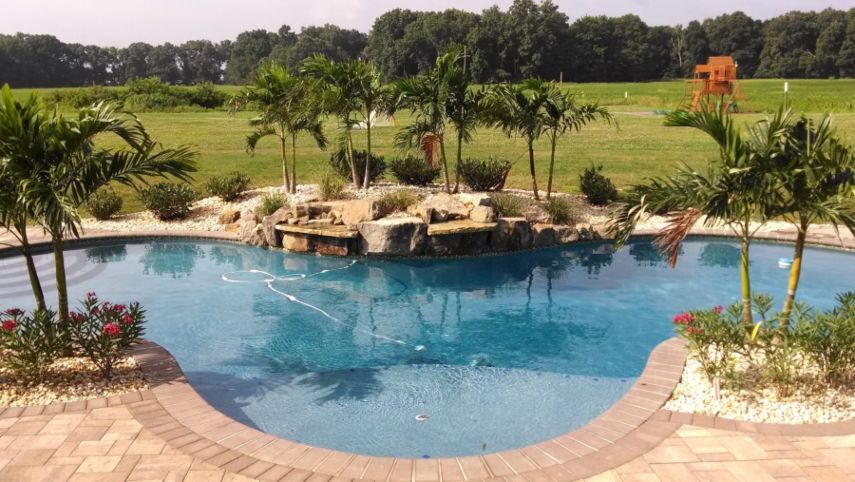
Out of Sight, Out of Mind Creating a seamless backyard oasis often involves more than just setting up a pool; it also involves cleverly integrating all necessary pool equipment into your landscape to maintain aesthetic and functional harmony. Here are six effective strategies to conceal your pool equipment stylishly. 1. Landscaping Ideas to Hide Pool Equipment One of the most natural ways to disguise pool equipment is through strategic landscaping. Tall, dense shrubs or climbing vines not only shield unsightly filters and heaters but also enhance the greenery of your space. Choose evergreen plants to ensure year-round coverage and plan the layout to allow easy access for maintenance. 2. Fence to Hide Pool Equipment Installing a decorative fence around your pool equipment offers a dual benefit of aesthetics and protection. Choose materials and designs that complement your existing backyard decor. Fences can be custom-designed to blend into the landscape, making them an integral part of your yard while keeping equipment out of sight. 3. Screens to Hide Pool Equipment Vinyl or wooden screens are a quick and cost-effective solution to cover pool apparatus. These can be freestanding and easily moved as needed, or anchored into the ground for stability. Screens come in various designs and colors, providing flexibility to match your outdoor theme while adding a decorative touch. 4. Pool Equipment Enclosures For a more robust solution, consider building a pool equipment enclosure. This could be a small shed or a box-like structure designed to house all the mechanical parts. These enclosures can be built from materials like wood, stone, or even decorative concrete, and are great for not only hiding the equipment but also protecting it from the elements. 5. Hiding Pool Equipment with Plants Incorporating potted plants around your pool equipment is a movable and attractive option. Large tropical leaves or flowering plants can distract the eye and blend the equipment into the natural surroundings. This method allows for easy access and flexibility, as plants can be repositioned as needed. 6. Utilize Existing Structures If you already have structures like a gazebo, pergola, or a deck, use them to your advantage. Integrate your pool equipment into these elements by creating hidden panels or doors that offer access when needed but keep the equipment out of sight when closed. Choose the Method that Suits Your Needs These methods not only help in maintaining the visual appeal of your landscape but also protect your pool equipment from environmental wear and tear, potentially extending its lifespan. By choosing the right method to suit your style and space, you can enjoy a pristine pool area that feels like a true escape. Take Your Pool to the Next Level with Coastal Pools Embark on the journey to transform your outdoor space in Maryland or Delaware into a refuge of relaxation with Coastal Pools! With a commitment to innovation, craftsmanship, and customer service, we’re dedicated to making your dream outdoor oasis a reality. From unique pool designs tailored to your desires to lifelong care and maintenance, we prioritize building relationships that last. Let’s create memories and redefine leisure together—contact Coastal Pools online or at 410-827-0888 today!
How Long Do Pool Filters Last?: Types of Pool Filters
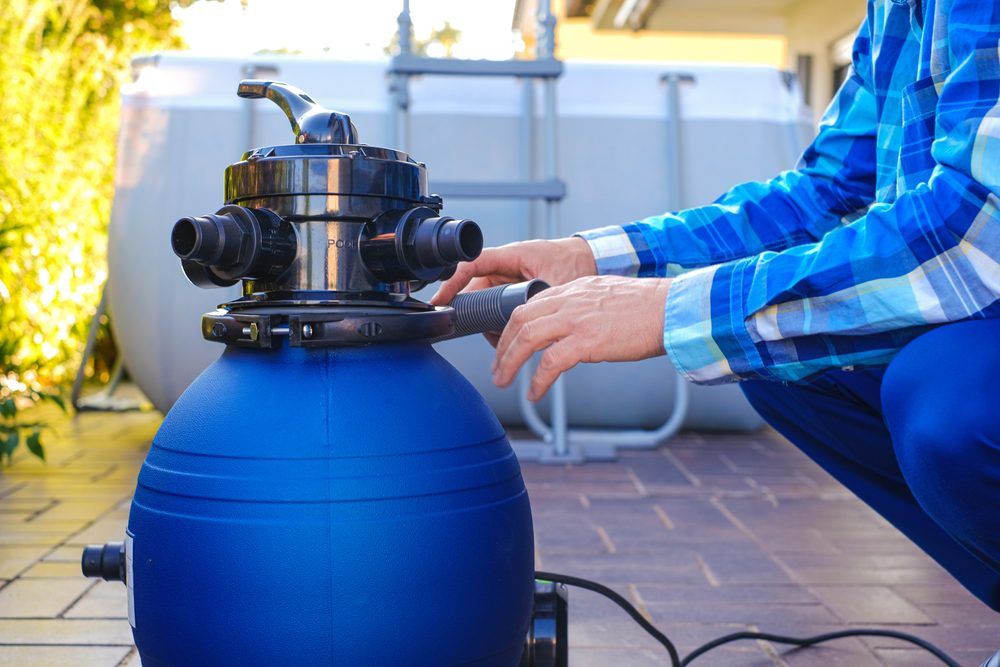
How Long Do Pool Filters Last?The Importance of Pool Filters For pool owners, maintaining clean and clear water is vital, and much of this responsibility falls on the pool filter. But one of the most common questions new and experienced pool owners alike ask is: “How long do pool filters last?” Understanding the lifespan of your pool filter and its components, such as sand and cartridges, is crucial to keeping your swimming pool in top condition. Lifespan of Pool Filters The lifespan of pool filters depends on several factors including the type of filter, usage, maintenance, and pool size. Generally, pool filters can last between 3 to 7 years. However, this can vary significantly based on how well the filter is maintained and the type of filter you are using. Types of Pool Filters and Their Maintenance There are three main types of pool filters: sand, cartridge, and diatomaceous earth (DE). Each type requires different maintenance routines which can affect their overall lifespan. Sand Filters Sand filters have become popular for their simplicity and effectiveness. They filter out debris and impurities by allowing pool water to pass through a bed of sand. But, how often should you change the sand in your pool filter? Typically, it’s recommended to replace the sand every 7 to 10 years. This ensures the filter remains effective, as over time, the sand becomes smooth and less efficient at trapping particles. The sand filter tanks usually last between 7 and 20 years. Cartridge Filters Cartridge filters use a paper-like material to trap debris in the water. These filters are favored for their ease of maintenance and higher efficiency. How often to clean the pool filter if you’re using cartridges? It’s advisable to clean the cartridges every few weeks or as needed depending on pool usage and load of impurities. A deep clean should be done every 3 to 6 months, and the cartridge filter elements usually need replacing every 3-5 years depending on the conditions they’re subjected to. The cartridge filter itself usually lasts 15-20 years. Diatomaceous Earth (DE) Filters DE filters provide the highest level of filtration by using a natural substance called diatomaceous earth. DE filters are capable of filtering out much smaller particles than sand or cartridge filters. Like sand filters, DE requires backwashing and the DE medium itself should be replenished after every backwash. Typically, a complete change of DE is necessary every year, with frequent backwashing and replenishment of the earth after each backwashing. How Often to Replace a Pool Filter Even with diligent cleaning and maintenance, eventually, the physical parts of the filter will degrade and require replacement. How often to replace a pool filter entirely depends on the condition of the filter and the type. As a rule of thumb, carefully inspect your filter’s condition during routine cleanings and consult with a professional to assess whether a replacement is necessary. It is typical to expect to start replacing parts on a filter at the 10 year mark, and expect filters that are between 15-20 years old to potentially need to be replaced completely. Routine Maintenance is Key Maintaining your pool filter is crucial to ensuring your pool remains a clean, enjoyable space. By understanding the maintenance needs of your filter type, you can significantly extend its lifespan and improve its efficiency. Regular cleaning, timely replacement of sand or cartridges, and an occasional full filter replacement will help you keep your pool in pristine condition year after year. Service Your Pool with Coastal Pools Maintain your pool equipment and filter with Coastal Pools! Coastal Pools is here for you with our team of expert technicians. Experience a tailored approach to pool service and lifelong care in Maryland or Delaware. Contact us online or at 410-827-0888 today and let’s build your dream oasis together.
What Is a Zero Entry Pool?: Pros and Cons
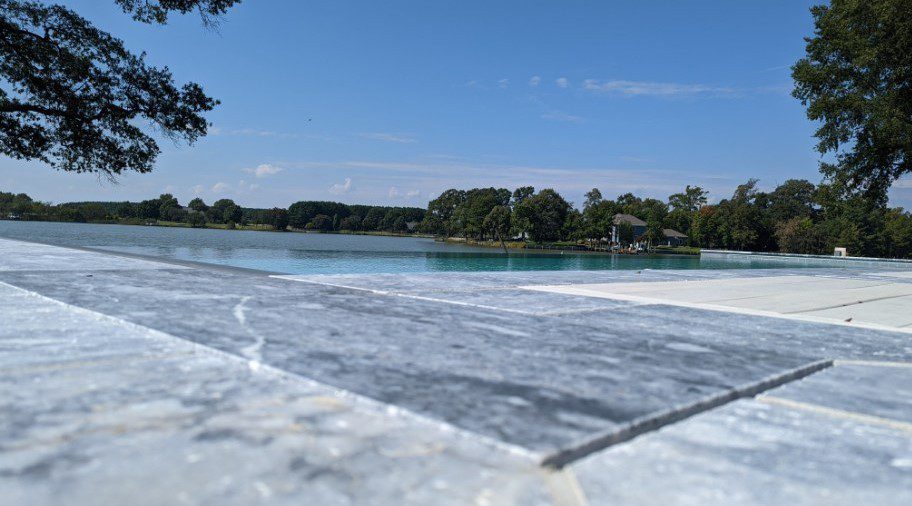
What Is a Zero Entry Pool? A zero entry pool, also known as a beach entry pool or zero depth pool, features a gradually sloping entrance that mimics the shoreline of a beach. Unlike traditional pools with stairs or ladders, the slope allows swimmers to walk directly into the water, with depth increasing gradually. This design enhances the visual appeal of the pool and adds a layer of accessibility and safety. Benefits of a Zero Entry Pool When summer heat waves hit, many homeowners fantasize about relaxing in a refreshing backyard pool, and the appeal of a zero entry pool is enticing. These pools stand out for their resort-style look and practical features. Below are the pros and cons to consider. Accessibility One of the most significant benefits of zero entry pool designs is their accessibility. These pools are ideal for families with young children, seniors, or anyone with limited mobility. The gentle slope allows for easy entry and exit without the need for ladders or steps, which can pose a risk for slips and falls. Aesthetic Appeal Zero entry pools bring visual elegance to your backyard. They often serve as the centerpiece of garden landscaping, offering a picturesque aquatic escape that resembles a natural beach. The design possibilities are vast, ranging from tropical themes complete with sand and palm trees to more minimalist approaches that focus on the elegance of the sloping entry. Versatile Use The shallow areas created by the zero depth entry are perfect for young children to play in under supervision, making it an excellent option for families. These areas can also be used for lounging in the water on a hot day, providing a cool, comfortable spot to relax or sunbathe. Drawbacks of a Zero Entry Pool While zero entry pools offer many luxuries, they also come with some limitations. Consider these potential drawbacks before deciding if this design is right for your space and lifestyle. Space Requirements Because the slope must be extended and gradual, these pools often require more space than standard designs, which can be a significant limitation for smaller properties. Maintenance Challenges The large shallow areas of zero entry pools may heat up more quickly, potentially promoting algae growth. The gradual slope can also make it harder to cover the pool completely, impacting water quality and energy efficiency. Limited Depth Flexibility While the shallow end of a zero entry pool is beneficial for safety and accessibility, it can limit activities that require deeper water, such as diving. They are also not ideal for swimming laps due to the lack of an edge at the end of the pool. Homeowners looking for a pool that supports a range of water sports might find the zero entry design limiting. The Allure of Zero Entry Pools Zero entry pools offer a unique blend of aesthetic beauty, accessibility, and family-friendly features that can make them an attractive option for many homeowners. However, the increased cost, potential maintenance issues, and spatial requirements are important factors to consider. Whether a zero entry or a traditional pool is the best choice will depend on individual needs, preferences, and the specific constraints of the property. By carefully considering these points, homeowners can make a well-informed decision that best suits their lifestyle and budget. If you’re considering a zero entry pool, working with an experienced custom builder like Coastal Pools ensures you get a design that fits your space, lifestyle, and budget. Let Coastal Pools Design Your New Zero Entry Pool Experience the height of luxury and relaxation with Coastal Pool’s custom pools! As the premier custom pool builder serving Maryland and Delaware, we’re committed to turning your outdoor dreams into reality. Our dedication to innovation, craftsmanship, and exceptional customer service ensures that your pool is not just a structure, but a lifelong investment in happiness. Contact us online or at 410-827-0888 today and join us in creating unforgettable memories and building lasting relationships—let’s bring your dream pool to life together.
How to Open a Pool for the Season
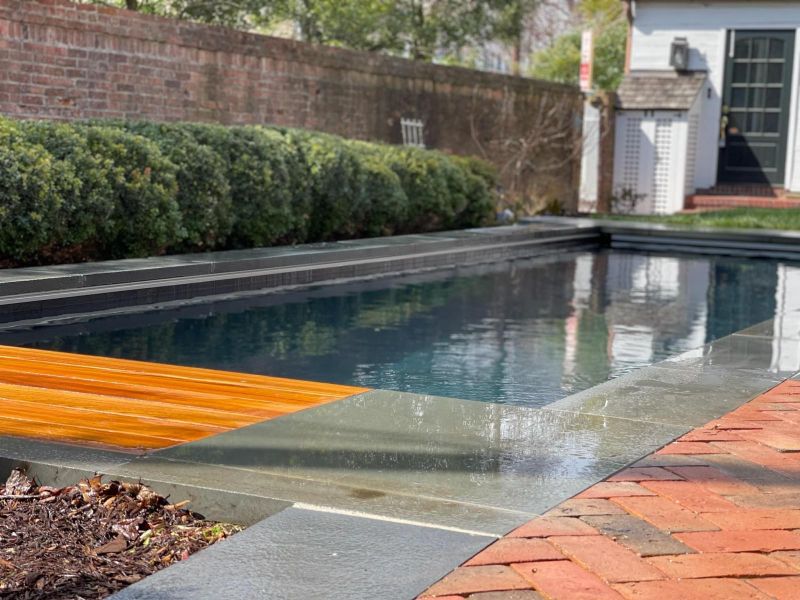
How to Open a Pool for the Season Opening a pool for the season is an exciting sign that warmer days are just around the corner. The process involves careful planning and execution to make sure that your pool is safe, clean, and ready for summer fun. Whether you’re a new pool owner or just need a refresher, here’s a comprehensive guide on how to open a pool for the season. When to Open Your Pool The ideal time for pool opening varies by location but generally coincides with consistent daily temperatures above 70°F. Opening your pool too late can lead to algae growth due to warmer temperatures triggering algae growth. Initial Preparation Before you dive into the how to open a pool, it’s essential to gather the necessary supplies and equipment. You’ll need a pool vacuum, a skimmer, a garden hose, a pool brush, a pole, and testing kits for pH, alkalinity, calcium harness, and sanitizer levels. Step 1: Remove and Clean the Pool Cover Carefully remove the cover, avoiding letting any debris fall into the water. Clean and dry the pool cover before storing it in a dry space to prevent mold and mildew. Also keep away from areas where rodents might nest as they will chew holes in the pool cover. Step 2: Inspect and Clean the Pool Once the cover is off, skim off any floating debris. Thoroughly brush and vacuum the pool walls and floor to remove any dirt and algae. This is crucial as initial removal of dirt, debris, and algae helps make the filter and chemicals work more efficiently once the pool is up and running. It also prevents long-term damage and keeps the pool looking its best. Step 3: Refill the Pool Top off the water level to ensure proper circulation. The water should reach the middle of the skimmer opening for optimal performance. If debris surfaces during this process, skim off the remaining debris. Step 4: Reconnect Your Equipment Reinstall any removed items such as ladders, diving boards, and pumps. Make sure all equipment is clean and in good working condition. Check for any maintenance issues from the previous season that need addressing. O-rings and gaskets have a tendency to dry out over the winter causing leaks. If this happens lubricate all seals and o-rings with a Teflon, or silicone base lubricant. Step 5: Balance the Water Chemistry One of the most critical steps in how to open a pool for the season involves balancing the water chemistry. What chemicals do I need to open my pool? Typically, you’ll need to adjust the pH, alkalinity, calcium hardness, and sanitizer levels. Start by adding shock and chlorine to the pool. Once chlorine levels start to rise you can begin balancing the rest of the pool chemistry. If pool is excessively dirty it may need to be shocked a few times before balancing other chemistry. Step 6: Run the Filtration System Once the chemicals are added, run the pool’s filtration system continuously for at least 24 hours. This helps distribute the chemicals evenly and filters out any remaining impurities. If pool starts off excessively dirty the filter may need to be cleaned a few times in the first weeks. Step 7: Monitor and Adjust After the initial filtration period, retest the water. Adjust the chemical levels as needed. This might need to be repeated several times until the water is perfectly balanced. It’s wise to have your pool water professionally tested at the start of the season and monthly thereafter. Simply bring a water sample to a pool expert who can assess its pH, alkalinity, calcium hardness, and chlorine levels. They may also recommend treatments such as shock, stabilizer, phosphate remover, metal treatment, or algaecide to prepare your pool for use. Continue running the filter and vacuuming for a few days. Once the water clears and chlorine levels stabilize, your pool will be ready for swimming. Make sure to test the water every week. How Long Does It Take to Open a Pool? The question of how long does it take to open a pool depends on various factors including the size of the pool, the initial condition of the water, and how well the pool was maintained during the off-season. Usually, the entire process can take anywhere from a few days to a week. Happy Swimming! Understanding how to open a pool properly at the start of the season can save you time, money, and hassle later on. By following these steps, you ensure that your pool remains a healthy and enjoyable place for everyone throughout the summer. Remember, regular maintenance is just as crucial as a good opening routine, so keep an eye on your pool’s condition throughout the season. Need Pool Services in Maryland or Delaware? Coastal Pools Can Help Dive into luxury with Coastal Pools! We’re dedicated to crafting exceptional pools, setting high standards in innovation, craftsmanship, and customer service. Our mission is to create unforgettable memories with unique pool designs tailored to your needs. Let us guide you through opening your pool—a lifelong investment in your happiness. Contact us today online or at 410-827-0888 and experience outdoor living at its finest.



